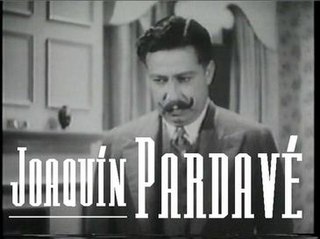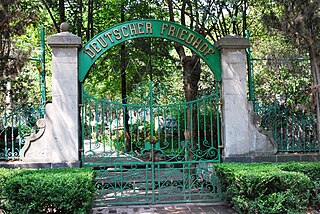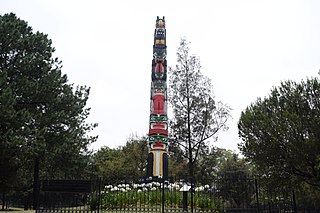| Total population | |
|---|---|
| Mexican residents born in the Netherlands: 1,221 (2020) [1] Dutch immigrants in Mexico: 1,509 (2009) | |
| Regions with significant populations | |
| Mexico City, Quintana Roo, Jalisco, State of Mexico, Querétaro | |
| Languages | |
| Spanish · Dutch | |
| Religion | |
| Roman Catholicism, Protestantism | |
| Related ethnic groups | |
| Dutch people, Flemings |
Dutch Mexicans (Dutch : Nederlandse Mexicanen) are Mexican citizens of Dutch descent.
Mexican citizens of Dutch descent who identify themselves as such would be considered Dutch Mexicans. It is not a category that INEGI measures in its Population Census so the number is unknown. [2] The concept is related to two other, partially overlapping, concepts namely Dutch immigrants to Mexico and residents of Mexico born in the Netherlands. [3] The number of Dutch immigrants to Mexico is measured through immigration statistics and totalled 1,509 living persons in 2009. [3] The Population Census asks for the place of birth of a person. In 2020 there were 1,221 residents of Mexico who were born in the Netherlands. [2]
People from what is now the Netherlands emigrated to Mexico as early as the 16th century. [4] One of the first may have been Enrico Martinez who was a Spanish-Dutch interpreter in the trial of Simon Pereyns. [4] In the early 17th century, Dutch military engineer Adriaan Boot designed the Fort of San Diego in Acapulco to defend it from attacks by his countryman Joris van Spilbergen, among others.
The Porfiriato, because of its political stability and its growing financial credibility, and the incipient Dutch industrialization spurred investments and trade. The Netherlands sent diplomats to Mexico to conclude new treaties that were signed between 1899 and 1909, but relations with the nation continued to be dispatched from the Dutch legation in Washington. Muller (1905) and De Veer (1910) tell that some Dutch started tobacco and coffee plantations in Mexico, but Dutch immigration was generally scant, although the Mexican government was interested in attracting good farmers and dairy farmers to Mexico and made it clear that there was room for Javanese workers on the sugar and cocoa plantations. The Dutch Association in Mexico was created in 1907 with 18 people in attendance. [5] Dutch trade in Mexico was carried out mainly from the port of Rotterdam and reflected the increasing modernization of industry and the Mexican railway. The Netherlands exports, for example, rails, coal and coke. But the total Dutch export to Mexico was less than half a million guilders a year. [6]
In 1910, the Netherlands was number five in the list of countries of origin of foreign investments in Mexico, after the United States and the three great European powers. At that time, the Holland-Mexico Mortgage Credit Society and the Dutch Transatlantic Commercial Association existed in Mexico City. It was not surprising that the small Dutch colony in Mexico City, still dependent on the Netherlands Legation in Washington: four days by train - insisted several times after 1900 on a diplomatic representation in Mexico, because Belgium already had it for years. [6] The first Dutch ambassador, based in Washington D.C., to visit Mexico was John Loudon in 1910 on occasion of the 100 year independence of Mexico and the 80th birthday of its President. [7] Mr. Loudon was the brother of Hugo Loudon, one of the founders of the Royal Dutch Petroleum Company that merged in 1907 into Shell plc. In 1919, Shell took control of Mexican Eagle Petroleum Company. In the 1920s, the Dutch community in Mexico of a few hundred souls consisted mostly of staff of this company. [8] Some of them stayed in Mexico and had descendants. Actresses Ariadne Welter and Linda Christian were daughters of a Dutch staff member of Shell.
The first group of immigrants of Dutch descent to settle in Mexico were Mennonites between 1922 and 1925. Under the protection of Plutarco Elías Calles, religious Mennonites of German and Dutch immigrants settled in the states of the north and the southeastern Mexico where Plautdietsch is still spoken today, a German dialect called "Niederdeutsch" or "Plattdeutsch" in Low-German terminology that is spoken along the border between the Netherlands and Germany.
After World War II, Dutch-Mexican relations intensified quickly following the visit of Prince Bernhard to Mexico in 1950. KLM established a direct flight from Amsterdam to Mexico in 1952 and the first Dutch embassador to Mexico arrived in 1954. The number of Dutch Mexicans increased steadily. [9]

The foreign policy of the Netherlands is based on four basic commitments: to the Atlantic cooperation, to European integration, to international development and to international law. While historically the Kingdom of the Netherlands was a neutral state, since 1945 it has become a member of NATO, the United Nations, the European Union and many other international organizations. The Dutch economy is very open and relies on international trade. During and after the 17th century—its Golden Age—the Dutch built up a commercial and colonial empire. It was a leading shipping and naval power and was often at war with England, its main rival. Its main colonial holding was Indonesia, which fought for and achieved independence after 1945. The historical ties inherited from its colonial past still influence the foreign relations of the Netherlands. Foreign trade policy is handled by the European Union. The Dutch have been active in international peacekeeping roles.
Asian Latin Americans are Latin Americans of Asian descent. Asian immigrants to Latin America have largely been from East Asia or West Asia. Historically, Asians in Latin America have a centuries-long history in the region, starting with Filipinos in the 16th century. The peak of Asian immigration occurred in the 19th and 20th centuries. There are currently more than four million Asian Latin Americans, nearly 1% of Latin America's population. Chinese, Japanese, and Lebanese are the largest Asian ancestries; other major ethnic groups include Filipinos, Syrians, Indians, and Koreans. Brazil is home to the largest population of East Asian descent, estimated at 2.08 million. The country is also home to a large percentage of West Asian descendants. With as much as 5% of their population having some degree of Chinese ancestry, Peru and Mexico have the highest ratio of any country for East Asian descent. Though the most recent official census, which relied on self-identification, gave a much lower percentage.

Joaquín Pardavé Arce was a Mexican film actor, director, songwriter and screenwriter of the Golden Age of Mexican cinema. He was best known for starring and directing various comedy films during the 1940s. In some of them, Pardavé paired with one of Mexico's most famous actresses, Sara García. The films in which they starred are El baisano Jalil, El barchante Neguib, El ropavejero, and La familia Pérez. These actors had on-screen chemistry together, and are both noted for playing a wide variety of comic characters from Lebanese foreigners to middle-class Mexicans.

German Mexicans are Mexican citizens of German origin. Most documented ethnic Germans arrived in Mexico during the mid-to-late 19th century and were spurred by government policies of Porfirio Díaz. Many of them took advantage of the liberal policies in Mexico at the time and went into merchant, industrial, and educational ventures. However, others arrived without any or much capital as employees or farmers. Most settled in Mexico City and the surrounding states of Puebla and Veracruz as well as the northern states of Sonora, Sinaloa, Jalisco, and Chihuahua. Later settlers headed south towards the Yucatán Peninsula. Significant numbers of German immigrants also arrived during and after both World Wars. The historic strength of German-Mexican relations has contributed to Mexico having the fourth largest German population in all Latin America behind Brazil, Argentina and Chile.

Italian Mexicans are Mexican-born citizens who are fully or partially of Italian descent, whose ancestors were Italians who emigrated to Mexico during the Italian diaspora, or Italian-born people in Mexico. The ancestors of most Mexicans of Italian descent arrived in the country during the late 19th century. Their descendants have generally assimilated into mainstream Mexican society.

Spanish Mexicans are citizens or residents of Mexico who identify as Spanish as a result of nationality or recent ancestry. Spanish immigration to Mexico began in the early 1500s and spans to the present day. The vast majority of Mexicans have at least partial Spanish ancestry; the Northern regions of Mexico have a higher prevalence of Spanish heritage. There are three recognized large-scale Spanish immigration waves to the territory which is now Mexico: the first arrived during the colonial period, the second during the Porfiriato and the third after the Spanish Civil War.

French Mexicans are Mexican citizens of full or partial French ancestry. French nationals make up the second largest European immigrant group in Mexico, after Spaniards.
Somalis in the Netherlands are residents or naturalized citizens of the Netherlands who are of Somali ancestry. They form one of the larger Somali communities in Europe and amongst the second largest African foreign community in the Netherlands. The Somalis form the second largest African community in The Netherlands and are one of the fastest growing communities.

Ariadne Welter was a Mexican movie actress of the Golden Age of Mexican cinema. She appeared in the Luis Buñuel film The Criminal Life of Archibaldo de la Cruz (1955). In 1956 she starred in the film El Vampiro, a classic among Mexican horror films.
German Bolivians are Bolivians of full, partial, or predominantly German descent, or German-born people residing in Bolivia.
Racism in Mexico refers to the social phenomenon in which behaviors of discrimination, prejudice, and any form of antagonism are directed against people in that country due to their race, ethnicity, skin color, language, or physical complexion. It may also refer to the treatment and sense of superiority of one race over another.
Indians in the Netherlands are residents of Indian origin in the Netherlands. The majority of the people of Indian descent in the Netherlands are of Indo-Surinamese origin. More recently the flow of emigrants from India has increased, as well as from Guyana and Trinidad and Tobago, mostly those married to Indo-Surinamese.

There is a significant Argentine diaspora in Mexico. According to the 2010 census, there were 13,696 registered Argentine citizens living in Mexico, an increase from the 6,465 registered in the 2000 census. Argentine immigrants constitute the second largest community of South Americans in Mexico and the fifth largest immigrant community overall.

There is a significant Colombian diaspora in Mexico. According to the 2020 census, there were 36,234 Colombian citizens residing in Mexico, making them the second largest South American immigrant community in Mexico.

Josecarlos Van Rankin Galland is a Mexican professional footballer who plays as a right-back for Bulgarian First League club Etar Veliko Tarnovo.

There is a small Chilean diaspora in Mexico. According to the 2010 census, there were 5267 registered Chilean citizens living in Mexico, an increase from the 3,848 registered in the 2000 census. Chilean immigrants constitute the fifth largest community of South Americans in Mexico and the fifteenth largest immigrant community overall.

Britons in Mexico, or British Mexicans, are Mexicans of British descent or British-born persons who have become naturalized citizens of Mexico.

Canadian Mexicans are Mexican citizens with Canadian ancestry or immigrants from Canada.
Belgian Mexicans are Mexican citizens of Belgian descent or Belgium-born people living in Mexico.
{{cite book}}: CS1 maint: location missing publisher (link){{cite book}}: CS1 maint: location missing publisher (link)